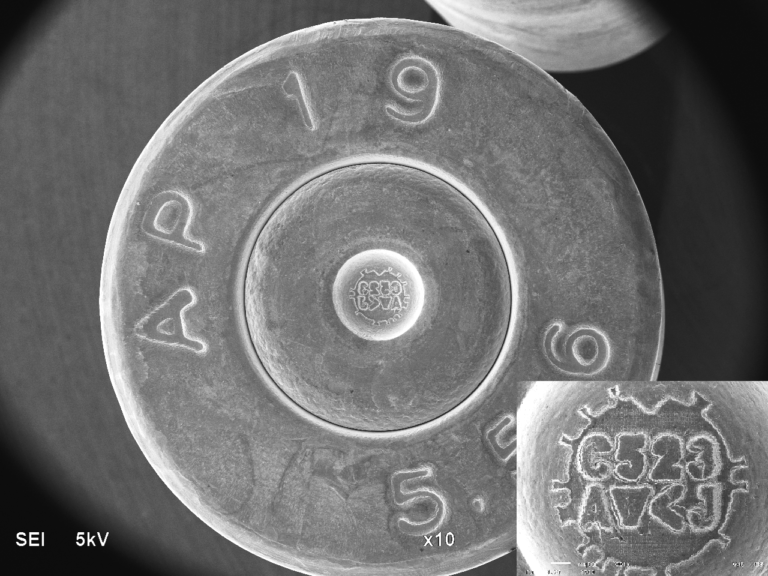
In a recent interview with Oprah Winfrey, Democrat nominee Kamala Harris debuted her new stance on the Second Amendment. The Vice President, who had previously never met a gun control proposal she didn’t like, said that if “somebody breaks into my house, they’re getting shot. [laughter] Sorry, probably shouldn’t have said that! [more laughter] But my staff will deal with that later.”
KAMALA: “If somebody breaks into my house, they’re getting shot. Ha ha ha! Sorry, probably shouldn’t have said that! Ha ha ha! But my staff will deal with that later. Ha ha ha!”
pic.twitter.com/uAIJpSgl4N
— Trump War Room (@TrumpWarRoom) September 20, 2024
Paired with the incessant refrain that she and her running mate Tim Walz are gun owners, the Harris campaign apparently wants to send the message to swing state voters that while Kamala Harris endorses universal background checks, red flag laws, and a new ban on so-called “assault weapons” (i.e., common semiautomatic rifles), she is otherwise very much pro-Second Amendment. So while she doesn’t want you to have an AR-15, your right to own and acquire handguns will be safe under a Harris administration.
It’s quite a shift of the political Overton Window that the Democrat nominee feels the need to take even a moderately pro-gun stance and openly embrace the castle doctrine. Harris’s allies in the gun control industry, groups like Everytown, Brady, and Giffords, have argued for years that having a gun in the home makes people less safe. The trouble is, there is little reason to believe that Harris’s current line is a real shift as opposed to mere election pandering.
Kamala Harris’s own history makes her sudden claims of support for handgun ownership highly suspect. Her actions as Attorney General of California are the reason why Californians could not purchase modern semiautomatic handguns designed after 2013. Her ban on their sale lasted until 2023 when a recent lawsuit brought by my colleagues representing the California Rifle & Pistol Association won a preliminary injunction against the law in question.
The California Handgun Roster
In 1999, the California legislature enacted the Unsafe Handgun Act which barred the sale of new handguns in California unless they passed certain safety tests and included certain features. If they did so, they were included on the State’s handgun roster and able to be sold in gun stores.
This prohibition did not apply to law enforcement or to an ever-expanding list of other quasi-law enforcement type government agency personnel such as the Department of Motor Vehicles, harbor or port districts, and the investigation division of the Department of Consumer Affairs. These agencies could continue to purchase and carry handguns that California law specifically defined as “unsafe.”
Over time, the legislature has amended the statutes that mandate what features a handgun must have to be considered “safe” for different categories of handguns, (semiautomatic pistols, revolvers, and rimfire semiautomatics) and has typically grandfathered those handguns that are already on the roster, but would otherwise meet the definition of an “unsafe” firearm under the new requirements. In other words, as long as these older firearms were already on the roster before the new roster-eligibility rules took effect, they could continue to be sold in California.
As of 2007, for a new-to-market semiautomatic centerfire handgun to avoid the “unsafe” classification and be eligible for sale, the handgun needed to have both a chamber load indicator (“CLI”) and a magazine disconnect mechanism (“MDM”), in addition to passing a drop-safety test and passing a firing reliability test.
Those mandates immediately constrained the California handgun market as most modern handguns do not have CLIs or MDMs. However, a few newly produced handguns continued to make it onto California’s roster. While those features were generally undesired, they weren’t were entirely impossible to include in certain pistol designs.
For example, in 2012 Smith & Wesson released its very popular 9mm Shield model and made a compliant version that could be sold in California with an MDM and CLI. The California-compliant version of the Shield was thus added to the state’s handgun roster and could be sold to consumers. It would be the last major semiautomatic centerfire handgun added to the roster for a decade.

Enter Microstamping
Despite these strict requirements, one handgun feature requirement that was passed by the legislature in 2007 went unenforced for years. The law included a requirement for microstamping, an experimental technology under which the firing pin of a pistol includes a microscopic array of unique characters that identify the make, model, and serial number of the pistol. The idea was that when the firing pin strikes the primer to fire a bullet, it leaves an indentation on the spent casing that law enforcement can then use to identify the handgun used and its registered owner.
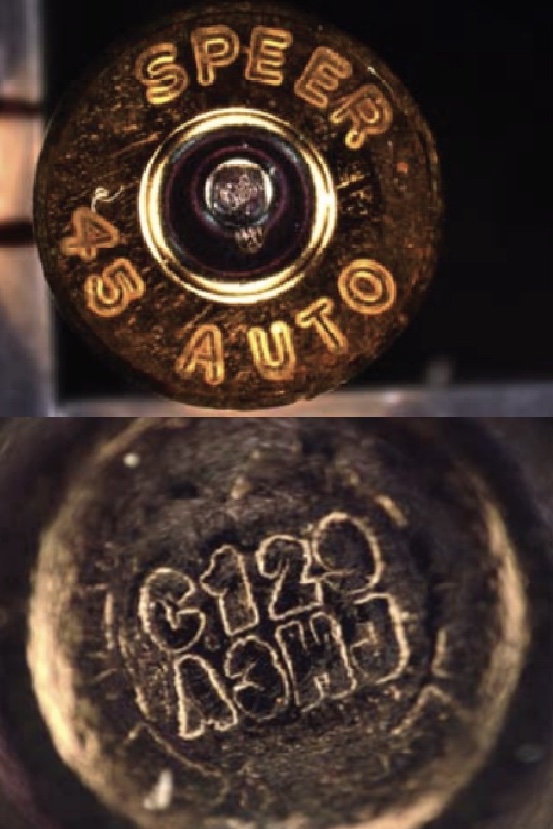
The idea was flawed in several ways. Criminals usually use stolen guns, not their own, so identifying the registered owner of a gun used in a crime was meaningless. Even if it was a gun the criminal had purchased legally, they could easily file down the firing pin slightly to destroy the array of identifying characters. Or they could replace the firing pin with another one. They could also make sure to collect their shell casings. Or they could just use a revolver in the commission their crimes, a type of gun that doesn’t leave shell casings behind.
Aside from the comical ineffectiveness of the microstamping idea, the technology behind it has simply never existed outside of a laboratory setting. Even the gun-hostile California legislature recognized this and wrote into the law that the mandate would only take effect once the Attorney General “certifies that the technology used to create the imprint is available to more than one manufacturer unencumbered by any patent restrictions.”
Thus, microstamping didn’t take immediate effect and handguns that at least had an MDM and CLI like the Shield could be sold new in California, along with the pre-2007 handgun models that were grandfathered in.
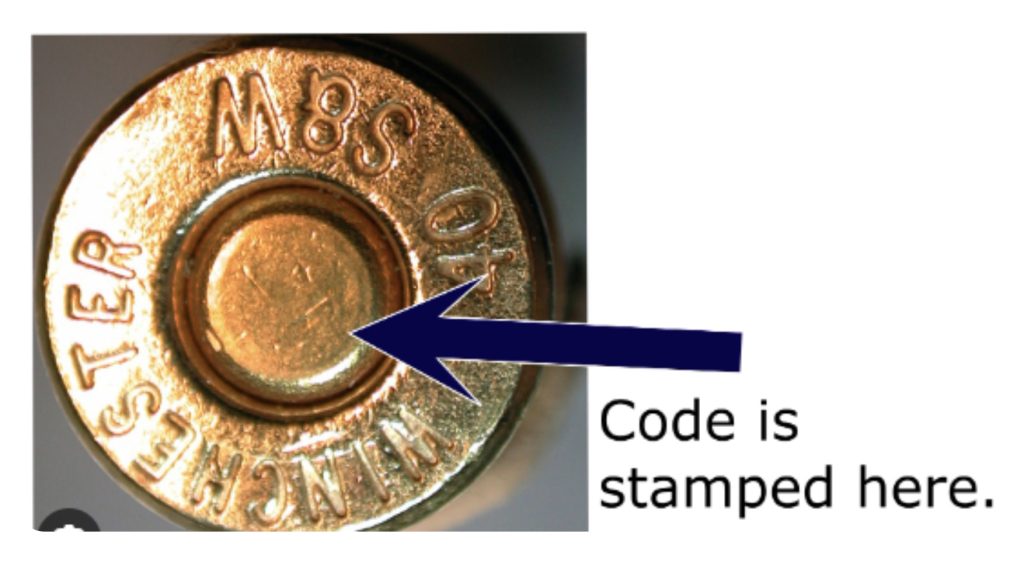 Attorney General Kamala Harris puts microstamping into effect, effectively banning the sale of new semiautomatic handguns in California
Attorney General Kamala Harris puts microstamping into effect, effectively banning the sale of new semiautomatic handguns in California
On May 17, 2013, then-California Attorney General Kamala Harris decided to issue a certification that microstamping technology was available to more than one manufacturer unencumbered by patent restrictions. From that point on, a semiautomatic handgun could only be sold in California if it had an MDM, CLI, and microstamping technology.
There was only one problem with Harris’s certification. The technology still did not exist outside of the laboratory…and it doesn’t to this day. Making a few microstamped firing pins for an experimental demonstration is one thing. Mass producing them is entirely another.
Chuck Michel, who is now my boss at Michel & Associates and President of the California Rifle & Pistol Association, told the San Francisco Chronicle at the time that…
It’s just not feasible for manufacturers to build micro-stamping into their manufacturing process.
Gun control activists mocked that. Cody Jacobs of what would later be known as the gun control group Giffords commented in that same SFGATE article that, “millions of guns are sold in California every year. If Smith & Wesson doesn’t want that money, another company will gladly take it.”
Time proved Chuck right, and Jacobs wrong. No new semiautomatic handguns entered the roster after 2013. Kamala Harris’s action meant the overwhelming majority of Californians who were not exempted from the law could not purchase popular handgun models released after 2013, such as all Gen 4 & 5 GLOCKs, the SIG SAUER P365, Smith & Wesson M&P 2.0 models, and many many more.
An expensive secondary market quickly sprouted in California. Because the law only applied to guns sold new in gun stores, but not to private sales, people could purchase off-roster handguns from a police officer (who was exempt) who had bought it, or from people who had moved in from another state already owning off-roster handguns. As supply was limited, off-roster guns on the secondary market commanded steep price premiums compared to what they would sell for in nearby Arizona or Nevada. One police officer in Pasadena was discovered to have sold over 100 off-roster guns, turning his exemption into a lucrative side business.
I bought an off-roster GLOCK 42 on consignment in a gun store in 2018. I paid about $650 for it when the same gun sold in other states for around $400. The only reason it was that “affordable” was because that model shoots the less-desirable .380 ACP round. At the time, a GLOCK 43, which fires the more popular 9mm round, was selling for over $1,000 in California’s secondary market.
Boland v. Bonta ended the microstamping requirement – for now
Various lawsuits after 2013 failed to kill off the microstamping mandate. California’s anti-gun Supreme Court even reached the ridiculous conclusion that the impossibility of the technology wasn’t a sufficient reason to strike down the law. But critical progress was finally made in 2023.
A lawsuit brought by my colleagues at Michel & Associates on behalf of the California Rifle & Pistol Association won a preliminary injunction against the roster’s requirements of new guns having the MDM, CLI, and microstamping.
Judge Cormac Carney explained in his ruling that “the Constitution protects much more than the bare right to keep and bear any outdated firearm for self-defense.” He also cited our expert witness Michael Beddow, a forensic examiner for the Phoenix Police Department, who concluded that microstamping technology “was not suitable for mass implementation.”
While the state quickly appealed and the Ninth Circuit stayed our court victory as to the MDM and CLI requirements (the case is still pending as of this date), the state didn’t even ask the Ninth Circuit to stay our victory regarding microstamping. Instead, the California legislature repealed the mandate, replacing it with a new law that plans to bring back microstamping in 2028 only if the Department of Justice “has determined that microstamping components are technologically viable” and other requirements for availability are met.
In other words, microstamping will return if the current Attorney General confirms by 2028 something that Kamala Harris falsely claimed was already the case in 2013 when she implemented the handgun ban.
Because of the removal of the microstamping requirement, several new handgun models are now available to ordinary consumers for the first time since 2013. While the MDM and CLI requirements are still in effect due to the Ninth Circuit staying our victory regarding those madates, manufacturers have released some new handguns that have those components for sale in California.
Our handgun market is still very constrained compared to other states, as not all guns models can easily add an MDM and CLI, but California-compliant versions of recent popular handguns such as the SIG SAUER P320, the Smith & Wesson M&P Shield Plus, and the Springfield Armory Hellcat are now available for sale.
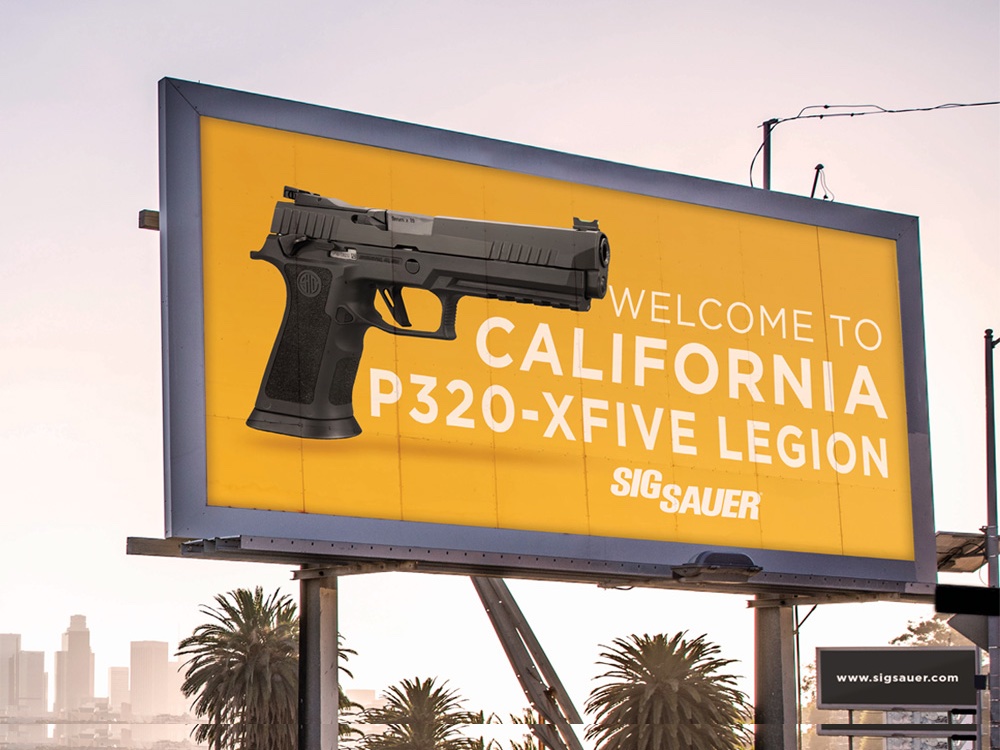
Conclusion: what interviewers should ask Kamala Harris
I decided to write this article because all of the above is all very “inside baseball.” People outside of the Second Amendment community in California are generally unaware of the microstamping law and Kamala Harris’s role in it implementing it.
Given that lack of awareness, the Vice President is probably very confident that no reporters she may face will be informed enough to ask her about her role in California’s modern handgun ban which was only recently declared unconstitutional.
If a reporter who interviews Kamala has read this article though, he or she should ask her . . .
- Do you stand by your actions as Attorney General of California which led to an effective decade-long ban on the sale of modern handguns in California, until the law was declared unconstitutional last year?
- If so, how do you square that with your recent statements that make it sound like you do not oppose the right to own handguns?
- Finally, as to any handguns you own, are they on the California handgun roster, or do you own any handguns that California law declares “unsafe?” If the latter, did you purchase it under an exemption not available to regular citizens?
American voters deserve to know Kamala Harris’s true stance on the Second Amendment, including whether she stands by or disavows her actions as California Attorney General that put in place a modern handgun ban in the state for a decade.
Konstadinos Moros is an Associate Attorney with Michel & Associates, a law firm in Long Beach that regularly represents the California Rifle & Pistol Association (CRPA) in its litigation efforts to restore the Second Amendment in California. You can find him on his Twitter handle @MorosKostas. To donate to CRPA or become a member, visit https://crpa.org/.
This post was adapted by SNW from a tweet posted by Konstadinos Moros.

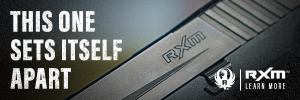
Is the Attorney General an “Exempt Person” as a law enforcement official?
Typo in nick.
Yes
I think also it should be noted that Comrade Kamala’s ‘gun owner ship’ (if its true) is not like yours or my gun ownership. She automatically qualified for it with no questions asked because of her position and didn’t need to ask the state for ‘permission’. She did not need to have her ‘suitability’ determined by the state of California and wait. And although she might (yes, that’s might) have had to do the 4473 if she purchased it herself she was exempt from the very background check she wants to subject others to and its more likely that the state bought it and gave it to her or just gave her one they already had thus pretty darn likely no 4473 was done by her. So Kamala is the ‘elite ruler’ hypocrite type of ‘gun owner’ (if she does actually own a gun) that is ‘privileged’ and sees herself as above us mere mortals. So she doesn’t need to worry about defense because she has armed security available to her and is immune from the trials and tribulations we mere mortals are subjected to so we can exercise a constitutional right that says specifically ‘shall not be infringed’. So sure, she says very disengenously she supports the 2A, she says that because she is free to do as she pleases to have guns while the rest of us she wants subjected to her ‘ruling’ us.
So no Kamala, you are not a gun owner like us.
There are two things not mentioned: First, Kamala’s certification was under penalty of perjury, which is important because her certification was undeniably false, i.e., she committed perjury. That lets you know how far this woman will go to get her way., Second, the law as it was then written required that the microstamp appear in TWO places on the spent cartridge, and the allegedly compliant machine only stamped it in one place, on the primer. Then there is the whole issue that, as Konstadinos points out, the experimental method is not reliable; after as few as twenty rounds, the microstamp is illegible. And yes, it is easily defeated, which the Legislature sought to remedy by banning the sale of “blank” firing pins, and criminalizing the exchange of or filing of firing pins. There is no cure for the use of stolen firearms, unless of course “tracing” is effective. (I think it significant that the ATF refuses to release statistics on the number of traces that actually lead to a perpetrator, suggesting that it is embarrassingly low.)